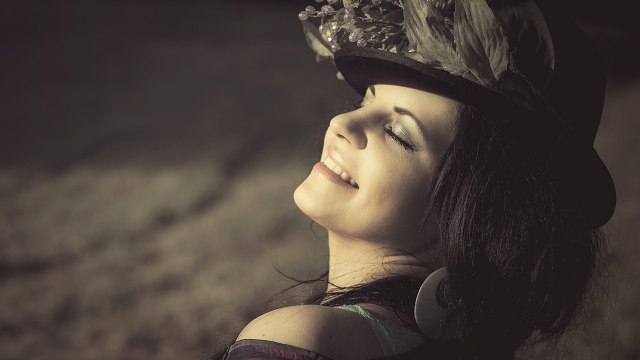
Portrait photography is an exquisite art form that allows us to capture and immortalize the essence of a person in a single frame. Through careful composition, lighting, and a deep understanding of human emotions, portrait photographers have the remarkable ability to create timeless moments that evoke emotions and captivate our hearts.
At its core, portrait photography is about more than just taking a visually pleasing photograph; it is about delving into the depths of an individual’s character and bringing their unique story to life. It is an art that requires both technical mastery and a keen eye for detail, as every minute element, from the angle of the face to the subtlest expression, can tell a compelling narrative.
In the world of portrait photography, the connection between the photographer and the subject is pivotal. It is this connection that fosters trust and allows the subject to feel comfortable, enabling their true persona to shine through. It is through this interaction that a meaningful relationship is established, and the photographer becomes a storyteller, capturing moments that reveal the subject’s vulnerability, strength, and inner beauty.
Portrait Photographer
Portrait photography has the power to transcend time, allowing future generations to catch a glimpse of their ancestors, their personalities, and the lives they led. Whether it be a newborn’s innocence, a couple’s love, or the wisdom etched on an elderly face, portraits freeze fleeting moments, preserving them for eternity.
In this article, we will delve deeper into the art of portrait photography, exploring the techniques, challenges, and rewards that come with capturing these timeless moments. We will uncover the secrets behind crafting compelling portraits that evoke emotions and resonate with viewers, while honoring the individuals who stand before the lens. So, grab your camera, and let us embark on this journey together, as we explore the rich world of portrait photography.
The Power of Expression
Capturing the essence of a person through portrait photography is a truly remarkable art. With the click of a camera, a single frame can freeze a moment in time, forever preserving the emotions, personality, and unique qualities of the subject. The power of expression lies in the ability to convey so much through the subtlest of gestures, the flicker of an eye, or the curve of a smile.
A skilled portrait photographer understands the importance of enabling their subjects to express themselves authentically. They create an atmosphere of comfort and trust, encouraging individuals to let their guard down and reveal their true selves. Through mindful observation and careful composition, the photographer captures fleeting moments of vulnerability, joy, or contemplation that showcase the depth of human emotion.
In the realm of portrait photography, every face tells a story, and every expression speaks volumes without uttering a single word. A well-crafted portrait has the power to evoke emotions within the viewer, enabling them to connect with the subject on a deeply intimate level. Whether it’s the radiant happiness of a newlywed couple, the quiet contemplation of an artist engrossed in their work, or the unwavering determination etched on the face of an athlete, these timeless moments have the ability to transcend time and space.
Through the art of portrait photography, we are reminded that every individual is unique, and their experiences and emotions are worth capturing and cherishing. It is a celebration of humanity and the ways in which we navigate the complexities of life. As we gaze upon a well-executed portrait, we find ourselves immersed in the stories and emotions frozen within the frame, appreciating the beauty and vulnerability of the human spirit.
Lighting and Composition
When it comes to portrait photography, lighting and composition play a crucial role in capturing those timeless moments. The right lighting can enhance the subject’s features and bring out their unique characteristics, while thoughtful composition can create a visually captivating image that tells a story. Let’s delve into these two key aspects in more detail.
Firstly, lighting sets the mood and tone of the portrait. The right balance of light can make or break a photograph. Soft, diffused light is often favored as it creates gentle shadows and adds a touch of elegance to the subject’s face. On the other hand, directional lighting can add drama and depth, casting intriguing shadows that highlight specific facial features. Whether it’s natural light or artificial light sources, understanding how to manipulate and control the lighting is essential for creating a striking portrait.
Next, let’s talk about composition, which is the arrangement of elements within the frame. A well-composed portrait draws the viewer’s attention to the subject and conveys a sense of harmony and balance. The rule of thirds is a popular composition technique, where the subject is placed off-center to create a more dynamic image. This can be complemented by leading lines or framing elements that guide the viewer’s gaze towards the subject. Additionally, paying attention to the background and eliminating any distractions ensures that the focus remains on the subject.
In conclusion, mastering the art of portrait photography requires a deep understanding of lighting and composition. The interplay between light and shadow brings out the subject’s personality, while thoughtful composition enhances the overall visual impact. By paying attention to these two key aspects, photographers can capture timeless moments that truly stand out.
Connecting with the Subject
Photography is not just about capturing images; it’s about capturing emotions and stories. When it comes to portrait photography, connecting with the subject is essential in order to truly capture their essence and create powerful photographs that stand the test of time.
To connect with the subject, it is crucial to establish a comfortable and relaxed atmosphere. Taking the time to get to know the person in front of the lens can make all the difference. Engage in conversation, ask questions, and actively listen to their responses. Showing genuine interest in their life and experiences will help create a sense of trust and openness, allowing you to capture their true personality.
As a photographer, it is also important to observe and understand non-verbal cues. Pay attention to body language, facial expressions, and subtle gestures. These can often reveal a person’s true emotions and provide valuable insights into their character. By being attentive to these details, you can capture genuine and authentic moments that truly reflect the subject’s essence.
Finally, remember that connecting with the subject is not a one-way street. It’s a collaborative process that involves both the photographer and the subject. Encourage the subject to express themselves and be open to their ideas and suggestions. Let them contribute to the creative process, allowing their individuality to shine through in the photographs. By fostering a sense of collaboration, you can create portraits that truly capture the unique spirit of the subject.
In conclusion, connecting with the subject is the key to creating timeless portraits. By establishing a comfortable and relaxed environment, actively listening, and embracing collaboration, you can capture powerful images that not only reflect the subject’s physical appearance but also their innermost self.






Recent Comments